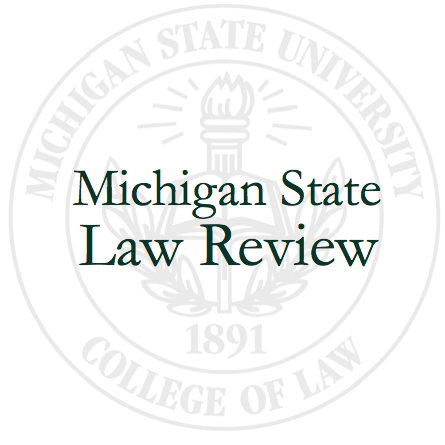Federal Judge Allows Oklahoma to Ring in the New Year with a Three-Part Lethal Injection Cocktail
By: Jessica Odell
Oklahoma’s lethal-injection troubles came to a head on April 29, 2014, when inmate Clayton Lockett was executed by means of a three-part lethal injection cocktail. The three-part lethal injection cocktail was adopted after Oklahoma lost access to traditional lethal injection drugs. The supply was limited due to European distributors placing bans on the drugs in an effort to take a stand against the death penalty.
Lockett was the first Oklahoma inmate to have the three-part cocktail. Lockett’s execution was a debacle and resulted in his death after a painful and extended period of time. Lockett was one of two inmates scheduled for execution on April 29th, but after Lockett’s botched execution, Charles Warner’s execution was postponed. The State placed an indefinite stay on executions after Lockett’s execution. Additionally, twenty-one inmates filed a complaint in the United States Western District of Oklahoma requesting declaratory and injunctive relief. On December 22, 2014, Judge Stephen Friot denied the plaintiffs’ motion for preliminary injunction, making it possible for the state of Oklahoma to administer its three-part cocktail starting again in 2015.
Lockett’s execution was far from an ideal first try at the three-part lethal injection cocktail for Oklahoma. Ideally, the administration of the three-part cocktail would go as follows: first the inmate receives midazolam a sedative, next the inmate receives vecuronium bromide that stops his breathing, and finally, potassium chloride is used to stop the inmate’s heart. According to the state, if all goes well the process should be short and painless. However, on April 29th, it appears that it was a long, painful process for Lockett.
Lockett’s execution began at 5:27 PM, when the paramedic and physician attempted to find a viable vein for the IV. From 5:27 PM until 6:18 PM, the physician and paramedic struggled to find a viable vein. Finally, the IV was started near Lockett’s groin. At 6:23 P.M. Lockett received the dose of midazolam. Next, at 6:33 P.M. the physical determined that Lockett was unconscious, and the full dose of vecuronium bromide was administered with only a portion of the potassium chloride. Soon after, Lockett began to sit up on the execution table, mumble, and speak. At 6:42 P.M. the physician concluded that there was a problem with the IV and the blinds were closed to the public. At this time, the Warden directed the physician to stop the administration of the potassium chloride. At 6:56 P.M. the execution was halted, and finally at 7:06 P.M. Lockett was pronounced dead.
After Lockett’s death took an hour and thirty-four minutes from the time of being placed on the table, the state of Oklahoma took a step back and stopped the use of the three-part lethal injection method until it could improve its protocol. In September, Governor Mary Fallin issued a press release discussing the investigation of Lockett’s execution, and the new protocol resulting from the investigation. Governor Fallin believed the State would be carrying out executions starting again in November, but later in the year she and the Department of Corrections issued statements that they needed more time to perfect the process. The State stands behind the method used in Lockett’s execution because it claims the problems occurred due to a faulty IV, not with the drugs. Nonetheless, the state proposes that using a larger dose of midazolam will rid the problem in the future.
Meanwhile Warner and twenty other inmates took their cause to federal court. Filing a complaint on June 25, 2014, the plaintiffs asserted that the use of the three-part cocktail by the state of Oklahoma was a violation of their Eighth Amendment rights, and that by changing dosages the state is experimenting on inmates. Then on November 10, 2014, four plaintiffs filed a motion for preliminary injunction, seeking to block their pending executions scheduled for early 2015.
Judge Friot denied the inmates’ motion for preliminary injunction on Monday, December 22, 2014. In his order, Judge Friot concluded that the plaintiffs did not meet the most relaxed preliminary injunction prerequisites. Judge Friot held that the plaintiffs failed to show that “they would suffer any non-speculative irreparable harm.” Additionally, Judge Friot found that it was not in the public interest to grant the preliminary injunction.
Four plaintiffs now face execution in early 2015—Warner is set to be executed on January 15, and Richard Glossip, John Grant, and Benjamin Cole are set to be executed on March 5. Most troubling about the methods Oklahoma will use is that other states have had problems with administering the three-part lethal injection drugs. Nonetheless, Director of the Oklahoma Department of Corrections Robert Patton believes Oklahoma is ready to carry out “humane” executions in 2015. Thus, the executions will move forward as planned. But all hope is not lost for the plaintiffs, as immediately after Judge Friot’s order the attorneys for Warner, Glossip, Grant, and Cole appealed to the Tenth Circuit.
The Tenth Circuit and other courts will likely be faced with the issue of whether the use of the three-part lethal injection as implemented by Oklahoma and other states is acceptable under the Eighth Amendment. Currently, states with the death penalty are all trying different cocktails in light of the restricted availability of traditional lethal injection drugs. Some states have been more successful than others, but it appears that collectively the states have not perfected a process that leads to a humane, quick, and acceptable method of execution. Accordingly, the Oklahoma executions remain on the calendar for now, but the struggle is not over. With traditional lethal injection drugs being inaccessible, it may be the perfect time for states to reconsider the efficacy and humanity of the death penalty.
